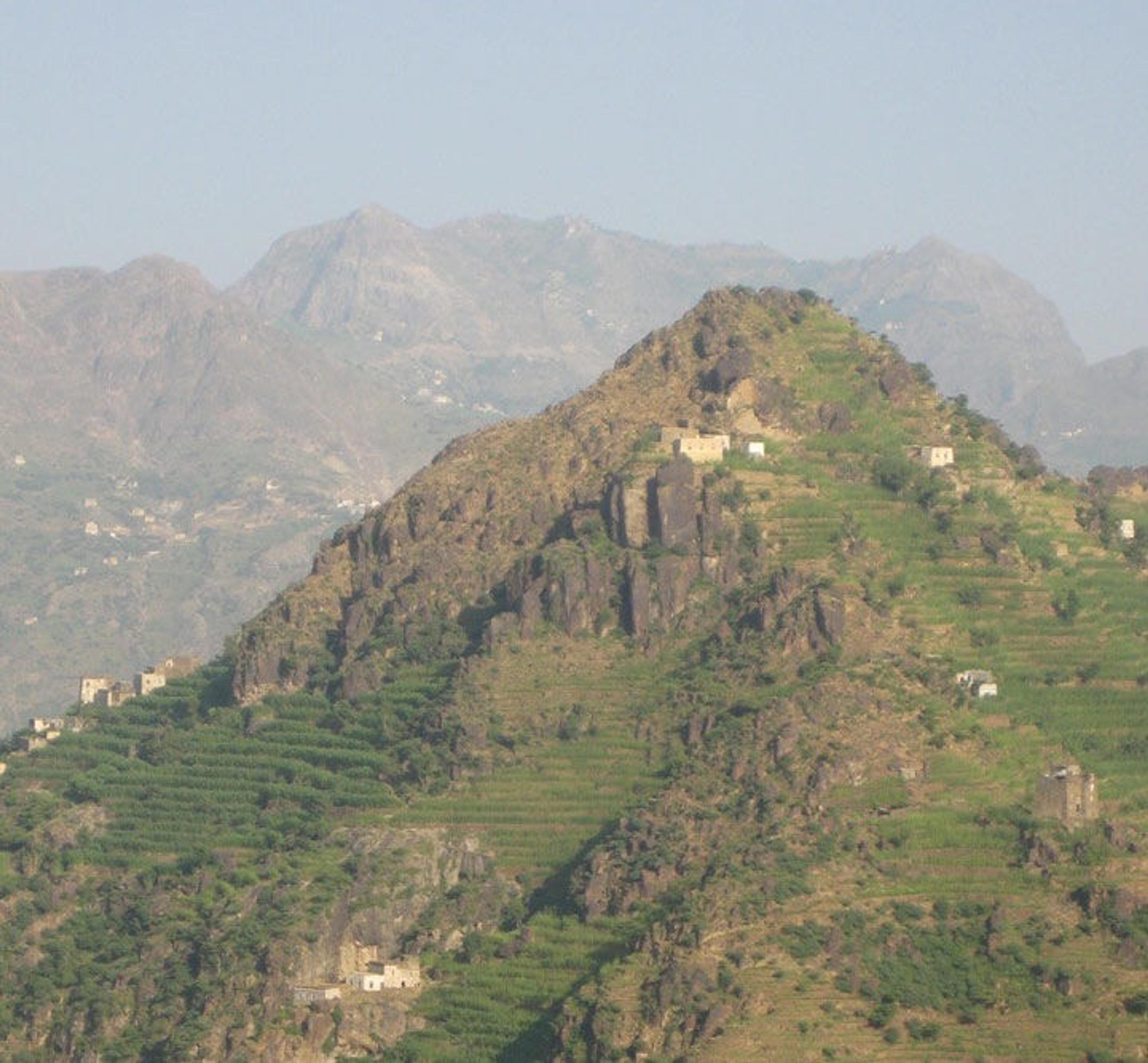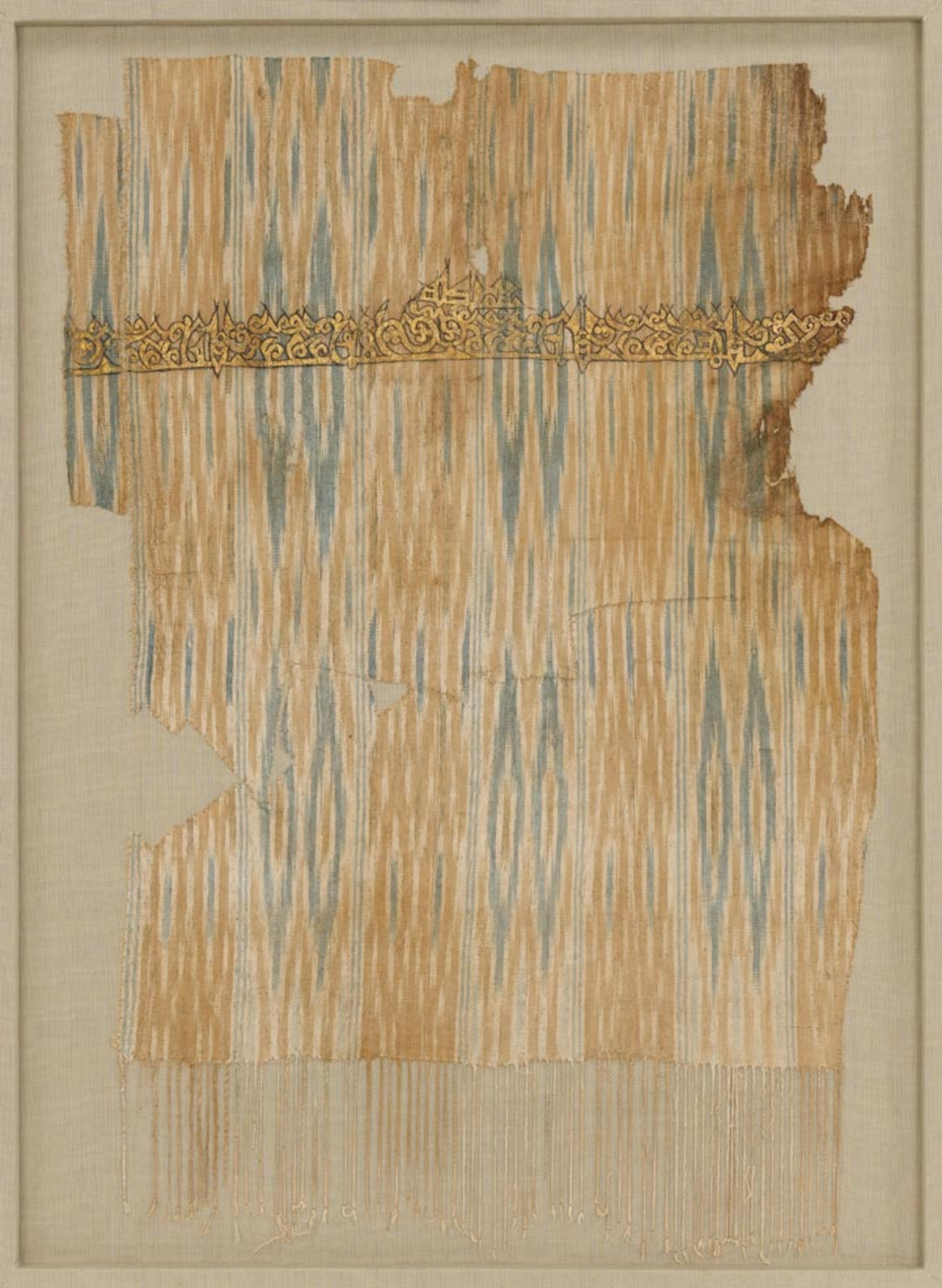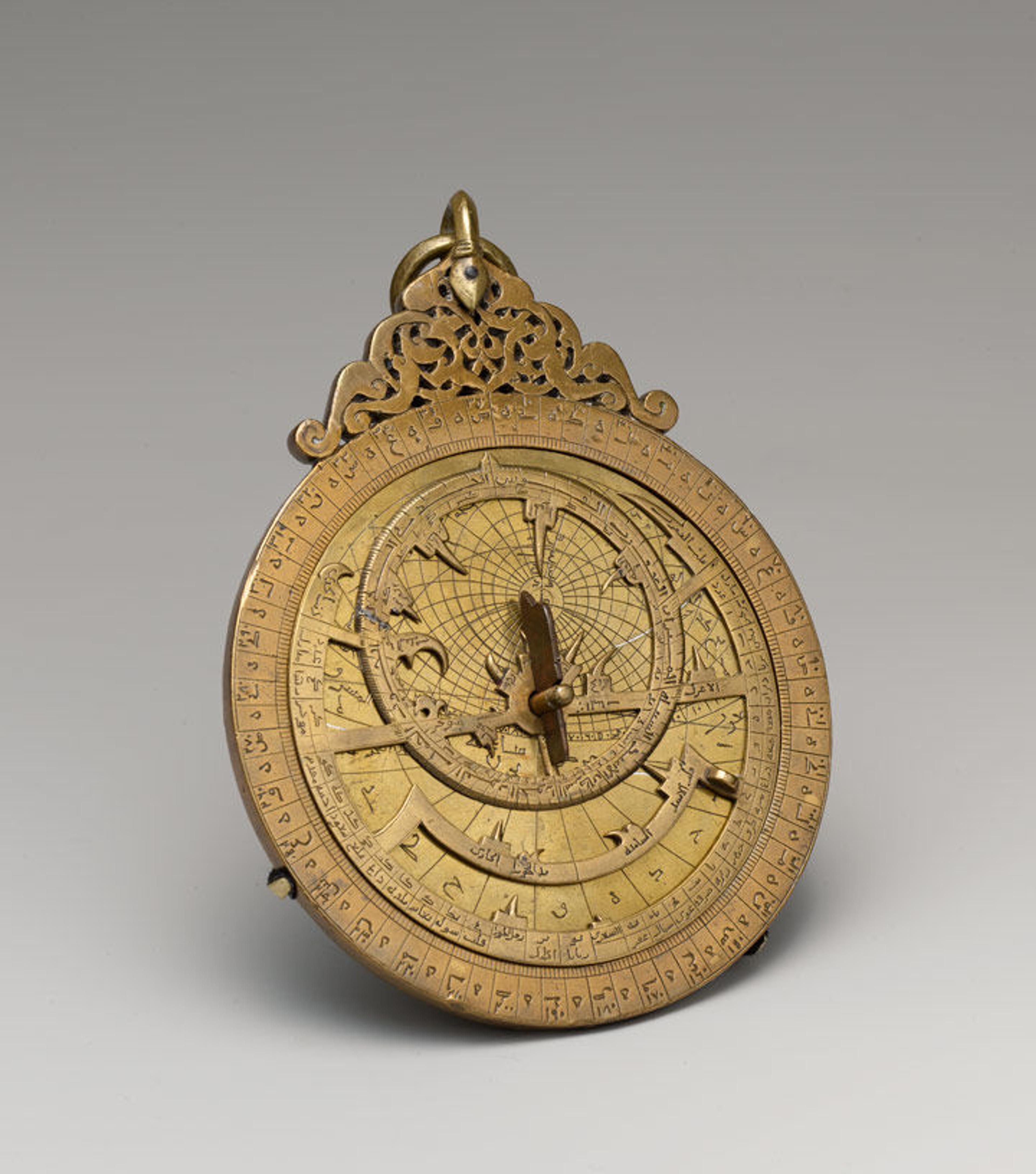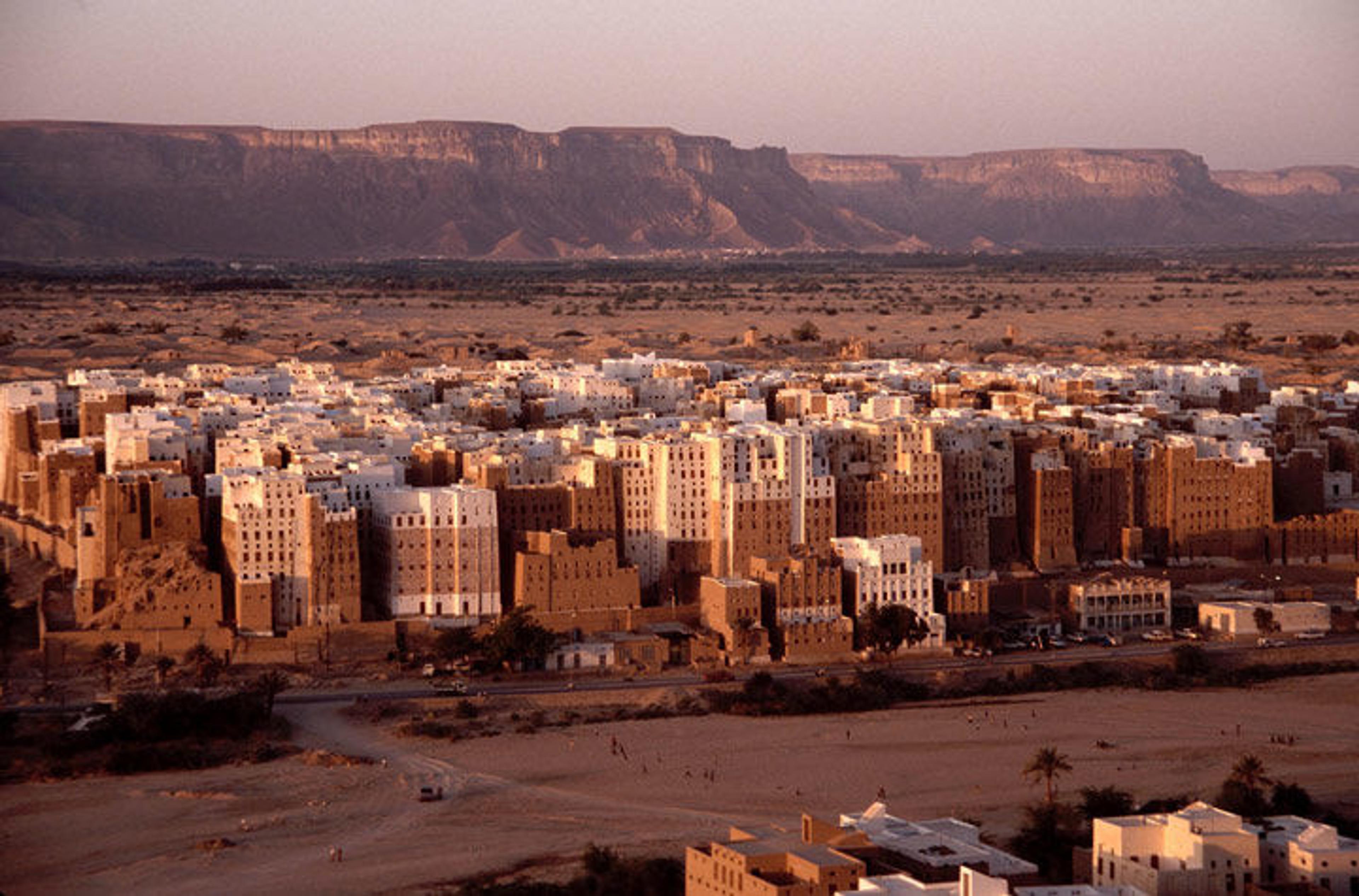From "Manhattan of the Desert" to Manhattan on the Hudson: Yemeni Heritage Week at The Met

The highlands south of San'a, Yemen, showing its mountains' many farm houses and agricultural terraces. Photo by the author
The Metropolitan Museum of Art, in cooperation with nine other leading museums around the world, is proud to be part of the UNESCO-led international awareness-raising campaign Yemeni Heritage Week: Museums United for Yemen, from April 24 through 30, 2016. In this first of two blog posts celebrating Yemeni Heritage Week at The Met, Matt Saba, Mellon curatorial fellow in the Department of Islamic Art, highlights Yemeni artwork from the Islamic Period in The Met collection; on Thursday, archaeologist Paul Zimmerman will discuss Yemen's equally rich pre-Islamic heritage on Now at The Met.
«Yemen is a country of bustling ports, verdant highlands, and ancient cities. In the millennium preceding the rise of Islam, Yemen had been home to a number of local kingdoms that became wealthy as a result of the incense trade. According to the Arabic historical chronicles passed down from the 10th century and beyond, Yemen became part of the Islamic world in the year A.D. 628, when the governor of San'a converted to the new religion. The reality of this conversion was probably quite complex, as Yemen was then—as it is now—a patchwork of different political, religious, and linguistic communities. By the end of the seventh century, however, Yemen formed part of the Dar al-Islam, and its residents pledged allegiance to the Prophet Muhammad's successors, the Caliphs. While Yemen would ultimately become a marginal political entity, it retained great significance as a seat of culture.»
Throughout the Islamic Period, Yemen was known far and wide for its produce, which included not only incense and spices but also dyes used to decorate cloth. Now preserved in The Met collection are several fragments of fine, striped Yemeni cloth that would have fetched handsome sums. The technique used to create the abstract patterns of concentric diamond shapes on such fragments is called resist-dying (ikat), also known as tie-dying. First, the weaver bounds the threads used for the warp into knots and dips them into dyes so that only the unbound portions make contact with the dye, creating a pattern. Then, these threads are set into the loom and woven together. Finally, the surface of the cloth is decorated with Arabic inscriptions painted in gold leaf and outlined in black ink.

Tiraz textile fragment, late 9th–early 10th century. Yemen. Islamic. Cotton, ink, and gold; plain weave, resist-dyed (ikat), painted; Inscription: black ink and gold leaf; painted; Textile: L. 23 in. (58.4 cm), W. 16 in. (40.6 cm). The Metropolitan Museum of Art, New York, Gift of George D. Pratt, 1929 (29.179.9)
Historical sources suggest that Yemen's resist-dyed fabrics were relished for the intensity of their color and the marvelous abstract patterns created by this process. In fact, Yemeni striped cloth was so much in fashion among the elite of medieval Baghdad that the Abbasid Caliphs—one of the most powerful and wealthy dynasties of Islam—used them to produce special garments known as tiraz, which were inscribed with the name of the caliph and bestowed upon individuals as a sign of honor.

Facade and minaret of Jami' al-Muzaffariyya in Ta'izz, Yemen, constructed by the Rasulid Sultan al-Muzaffar in the 13th century A.D. Photo by the author
Yemen achieved unprecedented political stability in the 13th century under the rule of the Rasulids, a dynasty descended from subordinates of the Ayyubids of Egypt and Syria. This period of peace also allowed for the blossoming of art and architecture in Yemen, and the architectural achievements of the Rasulids are still visible today in Ta'izz, the Rasulids' capital and Yemen's third-largest city. The Jami' al-Muzaffariyya (above) was the city's first congregational mosque, constructed by the Rasulid Sultan al-Muzaffar Yusuf (r. 1249–1295) during this period of great national growth.
The Rasulids were equally interested in scientific pursuits. Muzaffar's successor, Sultan al-Ashraf 'Umar (r. 1295–1296), wrote a treatise on astronomy as well as veterinary medicine. Among the most important objects in The Met collection is an astrolabe made under the supervision of this very Yemeni sultan. Complete with a detailed inscription that mentions the sultan and the craftsman who made the instrument, it is a rare example of a medieval object with a precisely documented history of production and patronage.

'Umar ibn Yusuf ibn 'Umar ibn 'Ali ibn Rasul al-Muzaffari. Astrolabe, dated A.H. 690/A.D. 1291. Yemen. Islamic. Brass; cast and hammered, pierced, chased, inlaid with silver; Case (a): Max. W. 7 5/8 in. (19.4 cm), Diam. 6 1/8 in. (15.6 cm), D. 1/4 in. (0.6 cm), Bar with attached nail (b): Max. H. 1 7/8 in. (4.8 cm), Max. W. 1 1/8 in. (2.9 cm), L. 5 in. (12.7 cm), Net (c): Diam. 5 in. (12.7 cm), Plates (d–g): Diam. 5 in. (12.7 cm), Pin (h): L. 1 3/4 in. (4.4 cm), W. 1/2 in. (1.3 cm). The Metropolitan Museum of Art, New York, Edward C. Moore Collection, Bequest of Edward C. Moore, 1891 (91.1.535a–h)
Sophisticated art and architecture were not limited to the patronage of Yemen's rulers, however. In addition to its many monumental mosques, Yemen is known for a unique form of vernacular domestic architecture known as the tower house, which appears to have ancient roots. Tower houses, still used in many of Yemen's urban centers, consist of four or more stories and are decorated on the outside with geometrical carvings and wooden window screens. The lower floor is usually dedicated to storage, while the upper floors are used for living. The top floor often contains a room surrounded by windows, known as a mafraj, meant for social gatherings.
Tower houses were both elegant and efficient, as they saved space and allowed for the easy construction of defensive walls around entire cities. From afar, clusters of tower houses adjoining one another appear like skyscrapers made of mud brick. The resemblance of these structures to New York's brick tenement buildings is so striking that tourists nicknamed the Yemeni city of Shibam the "Manhattan of the Desert." Of course, since Shibam's tower houses predate the tenements of New York by several hundred years, perhaps it is Manhattan that we should call "Shibam on the Hudson."

City of Shibam, Yemen, known as "Manhattan of the Desert." Photo © Jialiang Gao
Related Links
Yemeni Heritage Week at The Met: Digital Brochure
Gallery Talk: Pre-Islamic Art in Yemen (Friday, April 29, 6 pm)
Yemen Peace Project
#UNITE4HERITAGE
Matt Saba
Matt Saba is the Mellon Curatorial Fellow in the Department of Islamic Art.